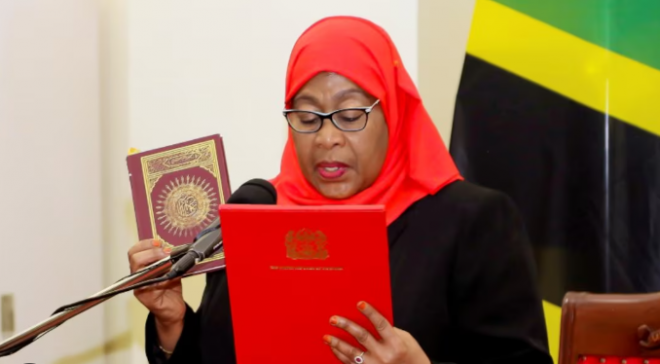African Landlocked countries and Small Island States to boost their economies through AfCFTA
NAIROBI, Kenya - This is according to the Representative for the Least Developed Countries, Landlocked Developing Countries and Small Island Developing States (UN-OHRLLS).
“When we talk LLDCs and SIDS in the context of the AfCFTA, we are talking about a total of 22 African countries, making up 40 per cent of the entire AU membership today,” Coordinator of ECA’s African Trade Policy Centre (ATPC), Mr Melaku Desta told more than 100 representatives of government, civil society as well as UN and African Union officials.
Mr Desta further underscored that LLDCs and SIDS can often be differentiated by the specific challenges they face, but are also confronted with many common challenges, particularly those related to the economic, social, and environmental factors that are global in scale.
“The Agreement Establishing the African Continental Free Trade Area (AfCFTA) promises to contribute towards addressing some of these challenges,” he underlined.
Mr Desta further stressed that all six of Africa’s SIDS and 15 of the 16 African LLDCs have ratified the AfCFTA, as a sign of their readiness to leverage the opportunities offered by the AfCFTA.
He further went on to highlight that the priorities defined in both the Vienna Programme of Action (VPOA) for LLDCs and the SAMOA Pathway for SIDS share some of the same goals as the AfCFTA, including that breaking down geographical, logistical, and regulatory barriers to trade and investment and enhancing product capabilities.
Declaring the meeting open, Chief Director of Economic Cooperation, International Trade and Diaspora in the Ministry of Foreign Affairs and International Trade of Zimbabwe, Ms Rudo Faransis underlined that an integrated African market would facilitate the incorporation of LLCDs and SIDS in many stages of production bestowing to their competitive advantages and thereby the creation of new regional values.
“I, therefore, urge all of us here to be instrumental in playing our part in the implementation of the AfCFTA, by identifying operational gaps and challenges … in order to come up with concrete proposals to address the needs of the continent’s most vulnerable countries, particularly LLCDs and SIDS,” the Chief Director said.
Also speaking at the opening session, Ms Gladys Mutangadura, Senior Programme Officer at the UN-OHRLLS pointed out the critical challenges facing LLDCs, considering the lingering impacts of COVID-19, which are now further, worsened by the new disruptions prompted by the war in Ukraine.
She stressed that the responses articulated in the VPOA and SAMOA fully address these peculiar challenges. She emphasized the importance of transport and connectivity, trade facilitation, use of advanced technologies to enable LLDCs and SIDS to easily integrate into large markets.
“This meeting is an opportunity to discuss development priorities for these two groups of countries ahead of the Fourth International Conference on SIDS to take place in 2024 and the Third United Nations Conference on LLDCs to be held in 2024,” Ms Mutangadura noted.
On his part, Mr Mamadou Biteye, Executive Secretary of the African Capacity Building Foundation, also emphasised the diversity of African LLCDs and SIDS, and highlighted three key considerations that would require urgent attention, namely creating effective and strong institutions; change readiness, innovativeness and inventiveness as they offer LLDCs and SIDS a key solution to overcome their geographical vulnerabilities; and strengthening member countries education to develop their economies in order to benefit from the AfCFTA.
“These are key issues which are important ingredients for the transformation we all strive to see happen in LLDCs and SIDS,” Mr Biteye reaffirmed.
In her address, African Development Bank (AfDB) Zimbabwe Country Manager, Ms Moono Mopotola briefed the meeting on the support AfDB provides African LLDCs and SIDS.
“The African Development Bank supports the building of capacity of LLDCs and SIDS, which will enable them to design policies to build hard and soft infrastructure that is key to access regional markets,” Ms Mopotola said.
The two-day meeting, hosted by the Government of Zimbabwe, aims to proffer some actionable recommendations on how to leverage the opportunities afforded by the AfCFTA for accelerated implementation of the priorities of the VPOA and the SAMOA Pathway.
Over 100 participants including 30 online attended the meeting, held under the theme “Leveraging the AfCFTA towards addressing the peculiar trade and development challenges of Africa’s LLDCs and SIDS”, which took place in Harare, Zimbabwe.
GAROWE ONLINE








